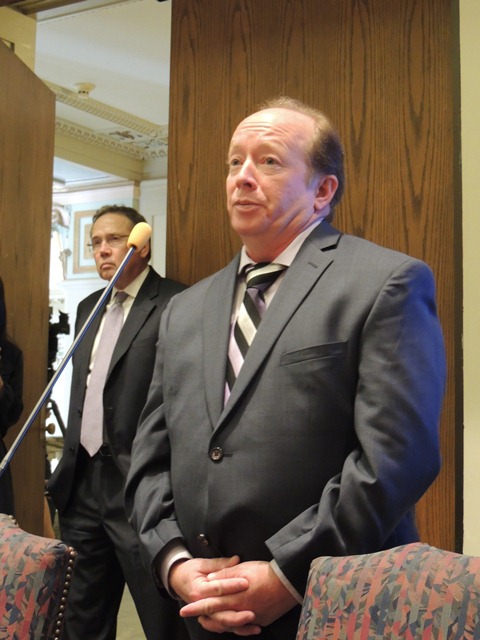Judiciary Committee hears testimony on eyewitness misidentification and wrongful convictions
 Judiciary Committee hears testimony on eyewitness misidentification.
Judiciary Committee hears testimony on eyewitness misidentification.
 Tim Durham testifies on eyewitness misidentification.
Tim Durham testifies on eyewitness misidentification.
Nationwide, more than 70 percent of wrongful convictions in criminal cases were tied to misidentification by eyewitnesses. In Oklahoma, that’s the case in about 30 percent of such cases. On Monday, members of the Senate Judiciary Committee heard testimony on the need for law enforcement to adopt proven methods aimed at improving the reliability of eyewitness identification. State Sen. David Holt requested the interim study.
“One of the worst things government can do is to unjustly take away a person’s liberty,” said Holt, R-Oklahoma City. “We heard from two men who were wrongfully convicted and sent to prison because of the way investigators worked with the victims to identify a suspect. Those identifications were later proven wrong through DNA evidence, though the damage done to those innocent men cannot be undone. But going forward, there are methods that can reduce eyewitness misidentification.”
Vicki Behenna, Executive Director of the Oklahoma Innocence Project, said the four key best practices included blind administration of lineups, so that the officer conducting the lineup wouldn’t know who the suspect was. She also discussed the need to instruct the eyewitness that the perpetrator may or may not be in the lineup. Other key best practices include the proper use of fillers, or other individuals in a lineup, that match the eyewitness’s description of the perpetrator, as well as eyewitness confidence statements taken when an identification is made.
Tim Durham of Tulsa was sentenced to more than 3,000 years for the rape of an 11 year-old girl after she identified him as her attacker. He was eventually exonerated when DNA proved he could not have committed the crime. He said he may have looked similar to the perpetrator, but there were clear differences.
“The victim in this case said her attacker had a pock-marked face…and a pot belly. My arrest record shows that at the time, and my photographs show that I had no pock-marked face. I actually had a full beard and mustache 14 days after the crime which I could not have grown in that time,” Durham said. “If these best practices had been in place, I believe that it would have been difficult for the victim in this case to even make that identification.”
Behenna said wrongful convictions also put the public’s safety at risk, because when an innocent person is imprisoned, the actual perpetrator may be out on the street committing more crimes. She told the committee that wrongful convictions come with a high price for those wrongly accused and for taxpayers.
“You can’t put in dollar amount the loss of life that an exoneree feels in being convicted for a crime which they did not commit. By way of dollar amounts, the state of Oklahoma has already paid out $1.36 million to six exonerees,” Behenna said, noting that didn’t even include the subsequent civil lawsuits, with one exoneree being awarded $4 million, and another receiving $8 million,” Behenna said, noting subsequent civil suits have cost millions more. “The cost to taxpayers is astronomical.”
While some police departments in some communities, like Oklahoma City, have already adopted these best practices for eyewitness identifications, others have not. The Oklahoma Innocence Project has offered free materials to help other departments adopt these procedures. Holt said while legislation could be one way of ensuring the identification best practices become more widely used, he’d like to see law enforcement move in that direction on their own.
“We’d like to see CLEET (Council on Law Enforcement and Training) help get this into their training with a goal of having all law enforcement agencies voluntarily adopt these best practices, but we’ll of course be monitoring this to see how it progresses.”
 Oklahoma Senate
Oklahoma Senate

